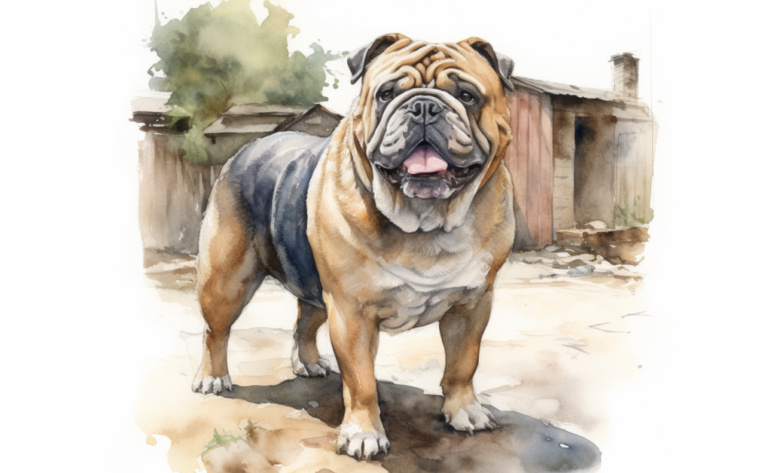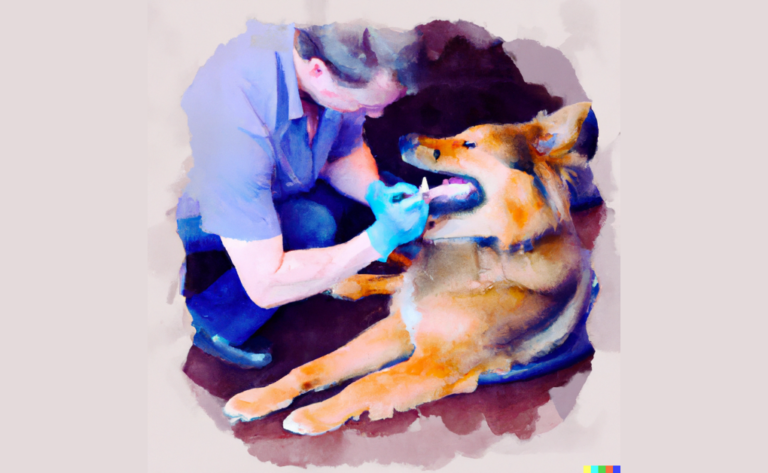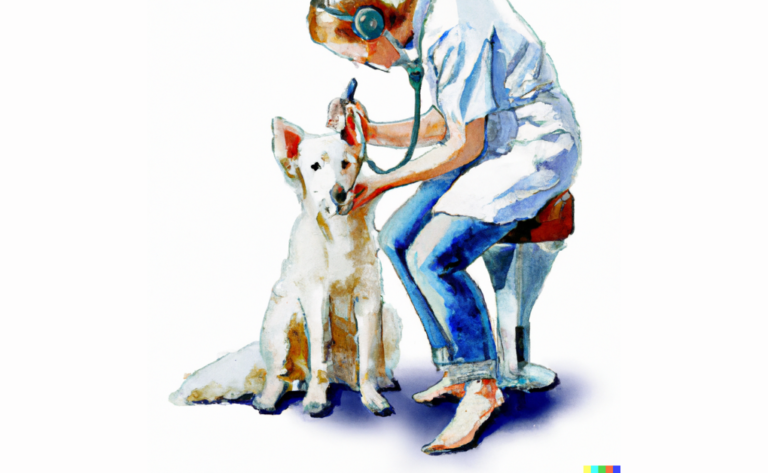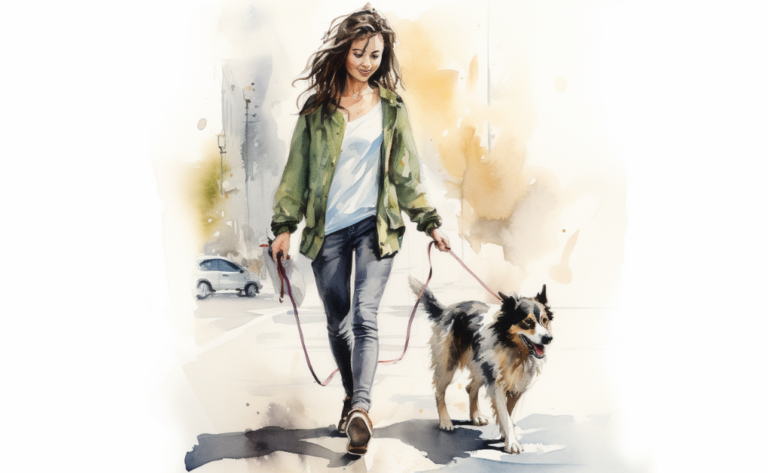Nurturing Your Young Adult Dog: Essential Care Tips and Advice
Introduction
When Jake adopted Max, a playful two-year-old Labrador Retriever, he never imagined the unique challenges that come with raising a young adult dog. With boundless energy and the occasional stubborn streak, Max kept Jake on his toes as they embarked on this new chapter together.
Caring for a young adult dog is an important responsibility. As your pup grows, its needs change, and adjusting your care routine is essential. You can ensure your furry friend stays healthy and happy into adulthood by providing the proper nutrition, exercise, and grooming.
Dog Life Stages
A dog’s life can be divided into several distinct stages, each with unique developmental milestones, behavioral changes, and care requirements. Here are the primary life stages of a dog:
- Neonatal (Birth to 2 weeks): This is the earliest stage of a dog’s life, and puppies are born blind, deaf, and utterly reliant on their mother for warmth, nutrition, and stimulation. Their primary focus during this stage is nursing and growing.
- Transitional (2 to 4 weeks): During this stage, puppies open their eyes and ears, becoming more aware of their surroundings. In addition, they begin to walk, bark, and play with their littermates. The weaning process also begins as puppies start to eat solid food.
- Socialization (4 to 14 weeks): This crucial stage is when puppies learn about their environment, interact with other dogs, animals, and humans, and develop critical social skills. They should be exposed to various experiences, sounds, and textures to help them become well-rounded, confident adult dogs.
- Juvenile (3 to 6 months): Puppies become more independent and adventurous during this stage, exploring their environment and testing boundaries. They also begin teething, which can result in destructive chewing. Consistent training, socialization, and positive reinforcement are essential during this stage.
- Adolescence (6 to 18 months): Similar to human teenagers, adolescent dogs can be challenging, as they may test limits, exhibit hormonal changes, and have increased energy levels. Therefore, ongoing training, socialization, and patience are crucial during this phase.
- Young adulthood (18 months to 3 years): Dogs reach physical maturity during this stage, and their personalities become more stable. They may still have high energy levels and require regular exercise, training, and mental stimulation.
- Adulthood (3 to 6 years): Adult dogs fully mature physically and mentally. They typically have established routines and stable temperaments and require consistent care, exercise, and mental stimulation to maintain their health and well-being.
- Mature adulthood (7 to 10 years): Dogs start showing signs of aging during this stage, and their energy levels may decrease. Regular veterinary check-ups are increasingly essential to monitor and address age-related health issues.
- Senior (10+ years): Dogs enter their senior years at different ages, depending on their breed and size. During this stage, dogs may experience a decline in physical and mental abilities. As a result, they require special care, including adjustments to diet, exercise, and more frequent veterinary visits to maintain their quality of life.
Each dog is unique, and these life stages can vary based on factors such as breed, size, genetics, and overall health. Therefore, it’s essential to understand and accommodate a dog’s changing needs throughout its life to promote overall health and well-being.
What is Considered an Adult Dog
A puppy is generally considered an adult dog when it has achieved physical maturity and is no longer growing or developing. However, depending on breed, size, and individual growth patterns, this stage of a dog’s life can be subjective. For example, smaller dog breeds typically reach adulthood earlier, around one year, while larger breeds can take up to 2 years or more to fully mature.
During adulthood, dogs are usually at the peak of their physical and mental development. Their energy levels tend to be stable, and they have likely completed their basic training and socialization. Adult dogs often have well-established routines, and their personalities and behaviors are more predictable than those of puppies or adolescent dogs.
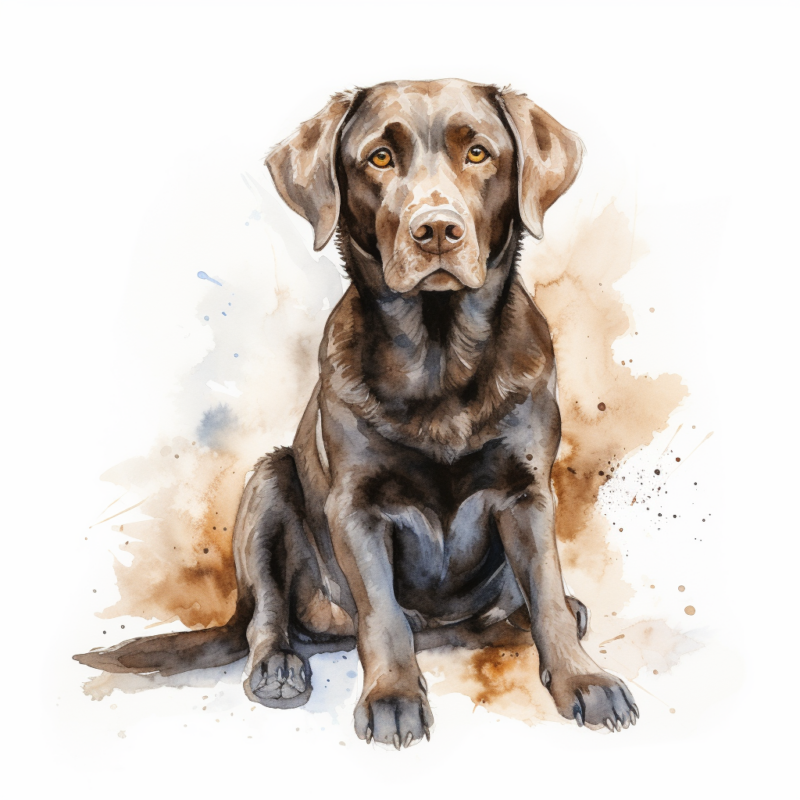
In the adult stage, dogs need regular exercise, mental stimulation, and social interaction to maintain their overall health and happiness. Additionally, proper nutrition is crucial to support their energy needs and prevent obesity or other health issues. Even a housetrained, well-behaved adult dog needs attention and cares to ensure their well-being.
As your dog transitions from a new dog to an older dog, their needs will change. Giving your dog the necessary support, including addressing separation anxiety and providing a comfortable dog bed. In addition, regular veterinary check-ups, vaccinations, and dental care are vital for their continued health.
An adult dog has reached physical maturity and exhibits stable energy levels and behavior patterns. The age range for adulthood varies based on the dog’s breed and size but typically falls between 1 and 3 years old. As they progress from puppy to senior dog, it’s important to remember that dogs require different care and support throughout their lives.
Spaying and Neutering
Spaying and neutering are surgical procedures performed to sterilize dogs and prevent them from reproducing. Here’s an explanation of each procedure:
- Spaying (Ovariohysterectomy) is the surgical removal of a female dog’s ovaries and uterus. It is a standard procedure that eliminates the dog’s heat cycles and prevents pregnancy. The surgery is typically performed under general anesthesia, and the veterinarian makes an incision in the abdomen to access and remove the reproductive organs. Spaying offers several benefits, including preventing unwanted pregnancies, eliminating or reducing the risk of certain reproductive disorders (such as uterine infections and ovarian or mammary tumors), and preventing behaviors associated with heat cycles.
- Neutering (Castration): Neutering surgically removes a male dog’s testicles. It is a straightforward procedure performed under general anesthesia. The veterinarian makes a small incision in the scrotum or the lower abdomen, removes the testicles, and closes the incision. Neutering offers various advantages, including preventing unwanted pregnancies, reducing behaviors associated with mating instincts (such as roaming and aggression), and decreasing the risk of certain reproductive disorders (such as testicular tumors and prostate problems).
Both spaying and neutering procedures are generally performed when dogs are young, typically around six months of age. However, the timing may vary depending on the veterinarian’s recommendation and the dog’s breed or health status. These procedures are considered routine and are widely recommended as responsible pet ownership practices. They not only help control the pet population but also offer health benefits and can contribute to improved behavior and overall well-being for dogs.
Understanding Behavior
Understanding your puppy’s behavior is essential for creating a strong bond and fostering a positive relationship between you and your new pet. Puppies go through various stages of development, which influence their behavior and learning abilities. By recognizing these behaviors, you can ensure your puppy grows into a well-adjusted adult dog.
- Exploration and curiosity: Puppies are naturally curious and eager to explore their environment. This behavior is essential for their learning and development. Therefore, encourage safe exploration and introduce them to new sights, sounds, and experiences to promote proper socialization.
- Playfulness: Puppies love to play, and it’s a vital part of their development. Play helps to build muscle, improve coordination, and develop social skills. So engage your puppy in interactive play sessions using toys and games that encourage physical activity and mental stimulation.
- Chewing and teething: Puppies undergo a teething phase where they must chew on things to relieve discomfort and strengthen their jaws. Provide appropriate chew toys to satisfy this natural urge and discourage destructive chewing habits.
- Socialization: Puppies must be exposed to various people, animals, and environments to develop good social skills. Proper socialization helps puppies learn to be comfortable in different situations and reduces the likelihood of fear or aggression as they grow older.
- Training and learning: Puppies are eager to learn and can be trained early. Use positive reinforcement training methods to teach them basic commands and good manners. Consistency, patience, and repetition are critical factors for successful training.
- Sleep: Puppies need more sleep than adult dogs, usually up to 18-20 hours a day. Ensure they have a comfortable and quiet place to rest, and establish a consistent routine to help them adapt to their new home.
- Potty training: Puppies need to be taught where to eliminate. Consistency, patience, and positive reinforcement are crucial for successful potty training. Take your puppy outside frequently and praise them when they do business in the designated area.
- Separation anxiety: Puppies may experience anxiety when separated from their owner or littermates. Gradually introduce short periods of separation to help them adjust and feel secure when left alone.
By understanding and addressing your puppy’s behaviors, you can create a strong foundation for their lifelong health, happiness, and well-being. Remember to be patient, consistent, and proactive in meeting their needs, and you’ll be well on your way to raising a well-behaved and well-adjusted adult dog.
Annual Veterinary Visits
Annual veterinary visits are crucial for maintaining your dog’s health and well-being. These routine check-ups enable your veterinarian to monitor your dog’s health, detect potential health issues early, and administer necessary vaccinations and preventive care. Here’s what you can expect during an annual veterinary visit for your pooch:
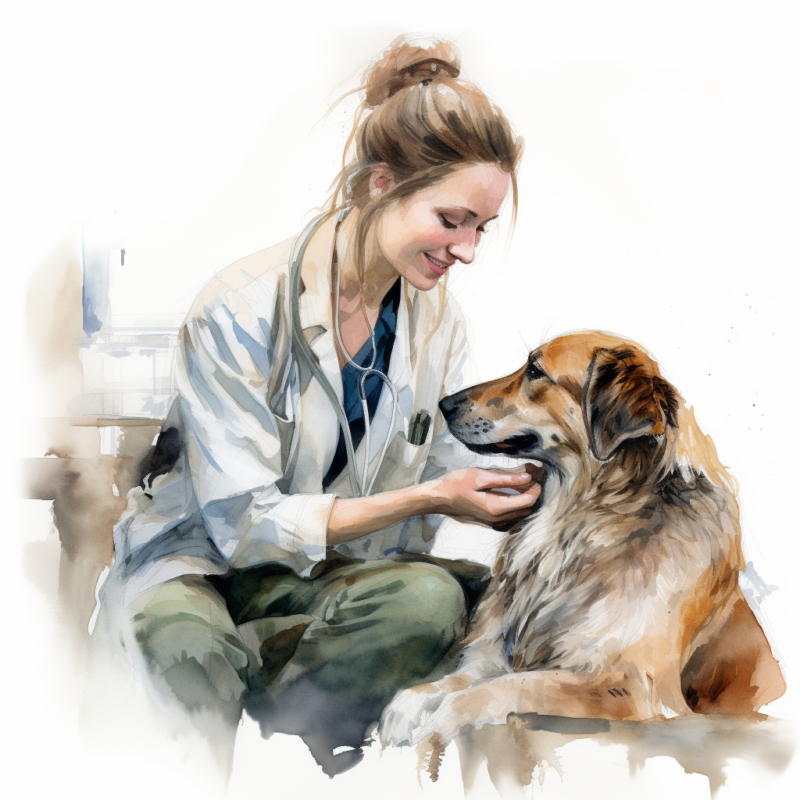
- Physical examination: The veterinarian will thoroughly examine your dog, checking their body from head to tail. This may include inspecting their eyes, ears, nose, mouth, teeth, skin, coat, paws, joints, and abdomen. The vet will also listen to your dog’s heart and lungs and palpate their lymph nodes and internal organs.
- Weight and body condition: Your dog’s weight and body condition will be assessed to ensure they maintain a healthy weight. Obesity can lead to numerous health problems, such as arthritis, so addressing weight concerns early on is essential. This may include adjusting their diet to have fewer calories or switching from puppy food to adult dog food.
- Vaccinations: Annual vaccinations protect your dog from various infectious diseases. The specific vaccines your dog receives will depend on their age, lifestyle, and regional requirements. Core vaccines, such as rabies, distemper, parvovirus, and adenovirus, are typically administered during annual visits.
- Parasite prevention and control: Your veterinarian will discuss the importance of year-round parasite prevention, including heartworm, flea, and tick control. They may recommend specific products based on your dog’s needs and lifestyle and administer any necessary treatments.
- Heartworm and fecal tests: Your dog may undergo a heartworm test to ensure they are parasite-free. Additionally, a fecal test may be performed to check for intestinal parasites, such as roundworms, hookworms, and whipworms.
- Blood work and other diagnostic tests: Depending on your dog’s age and health, your veterinarian may recommend blood work, urinalysis, or other diagnostic tests to screen for underlying health issues, such as kidney or liver disease, thyroid imbalances, or diabetes.
- Behavioral and lifestyle assessment: The veterinarian will ask you about your dog’s behavior, diet, exercise, and overall lifestyle. This helps identify potential issues and allows the veterinarian to provide tailored recommendations for your dog’s needs.
- Dental care: Your veterinarian will evaluate your dog’s dental health and may recommend a professional dental cleaning if necessary. Regular dental care is essential in preventing dental diseases, which can lead to more severe health problems if left untreated.
- Microchip: If your dog doesn’t already have one, your veterinarian may recommend implanting a microchip to help locate your pet if they become lost.
Annual veterinary visits are invaluable in ensuring your dog’s long-term health and well-being as part of responsible dog ownership. In addition, addressing potential health concerns early on and providing proper food and water can help your dog lead a happy, healthy, and active life.
Vaccinations for Young Adult Dogs
Vaccinations play a vital role in maintaining the health and well-being of young adult dogs by protecting them against various infectious diseases. The specific vaccines your dog receives will depend on their age, lifestyle, and regional requirements. Here’s a general overview of the vaccinations that may be administered to young adult dogs:
Core Vaccines
These are essential vaccines that all dogs should receive, regardless of their lifestyle. Core vaccines include:
- Canine Distemper Virus (CDV): This highly contagious viral disease can cause severe respiratory, gastrointestinal, and neurological symptoms and be fatal if left untreated.
- Canine Parvovirus (CPV): A highly contagious and potentially life-threatening disease that causes severe vomiting and diarrhea, particularly in puppies and unvaccinated dogs.
- Canine Adenovirus-2 (CAV-2): This vaccine protects against infectious canine hepatitis (adenovirus-1) and respiratory disease caused by adenovirus-2.
- Rabies: A fatal viral disease that affects the nervous system and can be transmitted to humans. Rabies vaccinations are required by law in most areas.
Non-Core Vaccines
These optional vaccines may be recommended based on your dog’s specific risk factors, lifestyle, and geographical location. Non-core vaccines may include:
- Bordetella bronchiseptica (kennel cough): This vaccine protects against one of the primary causes of kennel cough, a highly contagious respiratory disease. It is often recommended for dogs who frequently interact with other dogs, such as at dog parks, boarding facilities, or doggy daycare.
- Leptospirosis: A bacterial infection that can cause kidney and liver damage and can be transmitted to humans. This vaccine may be recommended for dogs exposed to wildlife or who spend much time outdoors, particularly in areas with standing water.
- Canine Influenza (dog flu): This vaccine protects against a highly contagious respiratory infection that can cause severe illness in some dogs. It may be recommended for dogs who frequently interact with other dogs or are boarded in kennels.
- Lyme disease: A tick-borne bacterial infection that can cause joint pain, fever, and other symptoms. This vaccine may be recommended for dogs who live in or travel to areas where Lyme disease is prevalent and have a high risk of tick exposure.
Your veterinarian will help you determine which vaccines are appropriate for your young adult dog based on their specific needs and risk factors. Although, talk to your veterinarian for advice; regular vaccinations and booster shots will help ensure your dog stays healthy and protected throughout their life.
What to Consider When Feeding a Young Adult Dog
When feeding a young adult dog, it’s essential to consider several factors to ensure they receive proper nutrition for their growth, development, and overall health. Here are some aspects to consider when feeding a young adult dog:
- Age-appropriate food: As your puppy transitions to young adulthood (generally around 12-18 months, depending on the breed), switching from puppy food to adult dog food is essential. Adult dog food is formulated with the right balance of nutrients, protein, and calories to meet the needs of a young adult dog.
- Quality of food: Choose a high-quality dog food that meets the nutritional requirements set by the Association of American Feed Control Officials (AAFCO). Look for ingredients like whole meats, meat meals, and easily digestible carbohydrates. Avoid artificial preservatives, colors, flavors, and fillers like corn and wheat.
- Portion control: Overfeeding can lead to obesity, which can cause various health problems. Follow the feeding guidelines provided by the dog food manufacturer, and adjust as needed based on your dog’s age, weight, activity level, and overall health. Call your veterinarian if you’re unsure about the appropriate amount to feed your dog.
- Meal frequency: Young adult dogs should generally be fed twice a day, which helps maintain consistent energy levels and prevents overeating. However, some dogs may require more frequent meals or specific feeding schedules based on their individual needs.
- Monitor weight and body condition: Regularly check your dog’s weight and body condition to ensure they maintain a healthy weight. Adjust their food intake as needed to prevent weight gain or loss. Consult your veterinarian if you notice sudden changes in your dog’s weight or body condition.
- Dietary supplements: In most cases, balanced and high-quality dog food will provide all the necessary nutrients for your young adult dog. However, some dogs may require additional supplements based on their specific needs or health conditions. Consult your veterinarian before introducing any supplements to your dog’s diet.
- Treats and snacks: Treats can be an essential training tool and a way to bond with your dog. However, they should be given in moderation, as excessive treats can contribute to weight gain and imbalanced nutrition. Instead, choose healthy, low-calorie treats, and consider using a portion of your dog’s regular kibble as treats during training.
- Be mindful of food allergies or sensitivities: Some dogs may develop food allergies or sensitivities, which can cause symptoms like itching, gastrointestinal upset, or ear infections. If you suspect your dog has a food allergy or sensitivity, consult your veterinarian to discuss dietary adjustments or potential elimination diets.
Considering these factors, you can provide your young adult dog with the appropriate nutrition to support their growth, health, and overall well-being.
Dog Food for an Adult Life Stage
Choosing the right dog food for an adult life stage is crucial for maintaining your dog’s health and well-being. Here are some key factors to consider when selecting dog food for an adult dog:
- Quality ingredients: Opt for dog food made with high-quality, natural ingredients. Look for whole meats, meat meals, and easily digestible carbohydrates. Avoid foods with artificial preservatives, colors, flavors, and fillers like corn and wheat.
- Nutritional balance: Adult dog food should provide a proper balance of protein, fats, carbohydrates, vitamins, and minerals to meet the nutritional needs of adult dogs. Check if the dog food meets the Association of American Feed Control Officials (AAFCO) standards for adult maintenance.
- Size and breed-specific formulas: Some dog foods are formulated specifically for certain breeds or sizes of dogs. These formulas consider the unique nutritional requirements of different breeds and sizes, ensuring your dog receives the right balance of nutrients for its specific needs.
- Activity level: Consider your dog’s activity level when selecting dog food. Active dogs may require more calories and nutrients, while less active or sedentary dogs may need a lower-calorie diet to prevent weight gain.
- Weight management: If your adult dog is overweight or tends to gain weight quickly, you may want to consider weight management or low-calorie dog food. These formulas provide the necessary nutrients while helping your dog maintain a healthy weight.
- Special dietary needs: Some adult dogs may have specific dietary needs due to health conditions, such as allergies, sensitive stomachs, or joint issues. Consult your veterinarian for the best dog food to address your dog’s needs.
- Wet vs. dry food: Some adult dogs may have a preference for wet or dry food, or they may benefit from a combination of both. Wet food can be helpful for dogs with dental issues or those who need additional hydration, while dry food can help maintain healthy teeth and gums.
- Read labels and reviews: Always read the labels on dog food to ensure it meets your dog’s nutritional requirements. Look for a statement indicating that the food meets AAFCO guidelines for adult maintenance. Additionally, read reviews from other dog owners to get a sense of the quality and palatability of the dog food.
By considering these factors, you can choose the best dog food for your adult dog, ensuring they receive the proper nutrition to stay healthy and happy throughout their adult life stage.
Activities You Can Do With Your Dog
Engaging in various activities with your dog helps keep them physically and mentally stimulated and strengthens your bond. Here are some fun activities you can do with your dog:
- Walking: A simple walk around your neighborhood, in a park, or hiking trail is a great way to keep your dog active and explore new environments together. Data has revealed that 22% of dog owners exercise their pets for less than three hours a week, with 40% of owners not going on walks with them.
- Fetch: Playing fetch with a ball, Frisbee, or toy is a classic activity that helps your dog burn energy while improving their coordination and focus.
- Agility training: Set up an agility course in your backyard or at a local dog park, and teach your dog how to navigate various obstacles such as jumps, tunnels, weave poles, and seesaws.
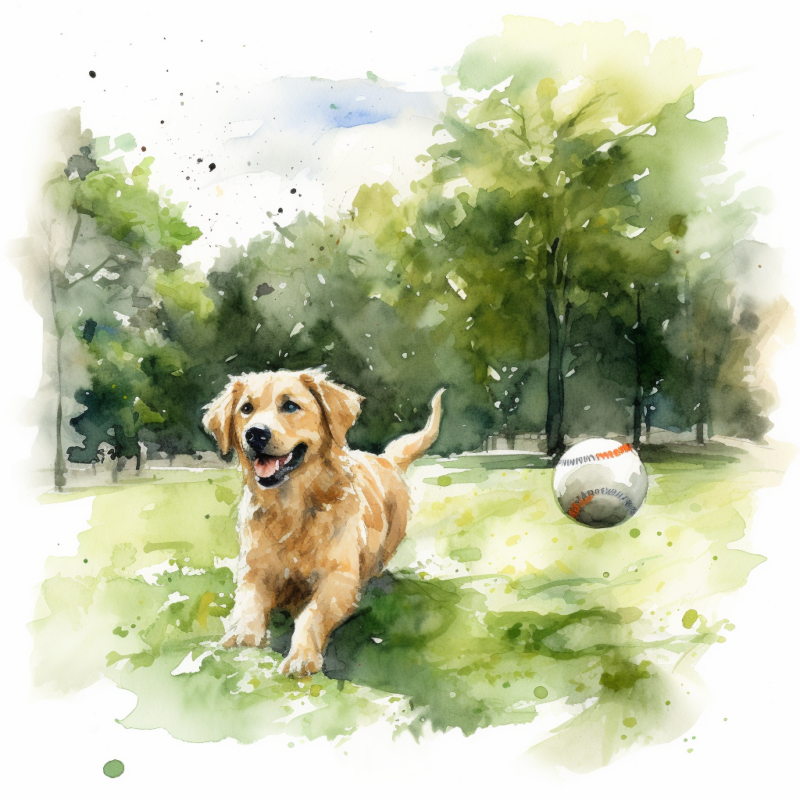
- Obedience training: Strengthen your dog’s basic obedience skills by practicing commands like sit, stay, down, and come. You can also enroll in a dog training class to learn new techniques and socialize with other dogs and their owners.
- Swimming: If your dog enjoys water, swimming can be a fun and low-impact exercise. Many dogs love to splash in lakes, rivers, or dog-friendly pools. Always supervise your dog around water, and consider using a dog life jacket for safety.
- Tug-of-war: A friendly game with a sturdy toy helps your dog practice their natural pulling instincts and can be a fun way to bond.
- Nose work: Tap into your dog’s natural scenting abilities by teaching them to search for hidden treats or toys. This activity can be done indoors or outdoors and helps to stimulate your dog mentally.
- Dog sports: Many dog breeds enjoy participating in organized dog sports like flyball, dock diving, lure coursing or herding trials. These activities can provide physical and mental challenges and opportunities for socialization.
- Dog playdates: Arrange playdates with other well-socialized dogs to help your dog practice their social skills, make new friends, and burn off energy through play.
- Puzzle toys and interactive feeders: Provide your dog with toys that require problem-solving skills, like puzzle toys or interactive feeders. These can help to mentally stimulate your dog and keep them occupied when you’re busy.
- Dog-friendly outings: Take your dog to dog-friendly cafes, restaurants, or stores, and expose them to new sights, sounds, and smells. This helps to improve their confidence and adaptability to new situations.
Remember to tailor the activities to your dog’s breed, age, physical abilities, and preferences. You can help keep your dog happy, healthy, and well-rounded by engaging in various activities.
Maintain a Good Oral Hygiene
Maintaining good oral hygiene in dogs is crucial for their health and well-being. Dental issues like tartar buildup, gum disease, and tooth decay can lead to pain, bad breath, and even systemic health problems if left untreated. Here are some tips to help you maintain good oral hygiene for your dog:
- Regular brushing: Brushing your dog’s teeth is the most effective way to prevent plaque and tartar buildup. Start by using dog-specific toothpaste, a soft-bristled toothbrush, or a finger brush designed for dogs. Aim to brush your dog’s teeth daily or at least a few times a week.
- Dental chews and toys: Provide your dog with dental chews and toys designed to help clean their teeth as they chew. These can help reduce plaque buildup and stimulate saliva production, which aids in keeping their mouth clean.
- Balanced diet: Feeding your dog a balanced diet can improve their oral health. Some dog foods are formulated to help maintain dental health by reducing plaque and tartar buildup. Consult your veterinarian for the best diet for your dog’s specific needs.
- Regular dental checkups: Schedule regular dental checkups with your veterinarian, who can monitor your dog’s oral health and address any issues before they become severe. Professional dental cleanings may be recommended to remove stubborn tartar and prevent gum disease.
- Dental wipes: Dental wipes can be used as an alternative for dogs resistant to brushing. These wipes are designed to remove plaque from your dog’s teeth and freshen their breath.
- Water additives: Adding dental water additives to your dog’s water bowl can help reduce bacteria and freshen their breath. These additives are typically safe and easy to use but should not be relied upon as the sole method of dental care.
- Monitor for signs of dental issues: Keep an eye on your dog’s oral health by regularly checking their teeth and gums. Look for signs of dental problems, such as bad breath, red or swollen gums, loose or broken teeth, or difficulty eating. If you notice these signs, consult your veterinarian for further evaluation and treatment.
By incorporating these practices into your dog’s routine, you can help maintain oral hygiene and ensure a happier, healthier life for your canine companion.
Frequently Asked Questions
Disclaimer: The information provided on this veterinary website is intended for general educational purposes only and should not be considered as a substitute for professional veterinary advice, diagnosis, or treatment. Always consult a licensed veterinarian for any concerns or questions regarding the health and well-being of your pet. This website does not claim to cover every possible situation or provide exhaustive knowledge on the subjects presented. The owners and contributors of this website are not responsible for any harm or loss that may result from the use or misuse of the information provided herein.



